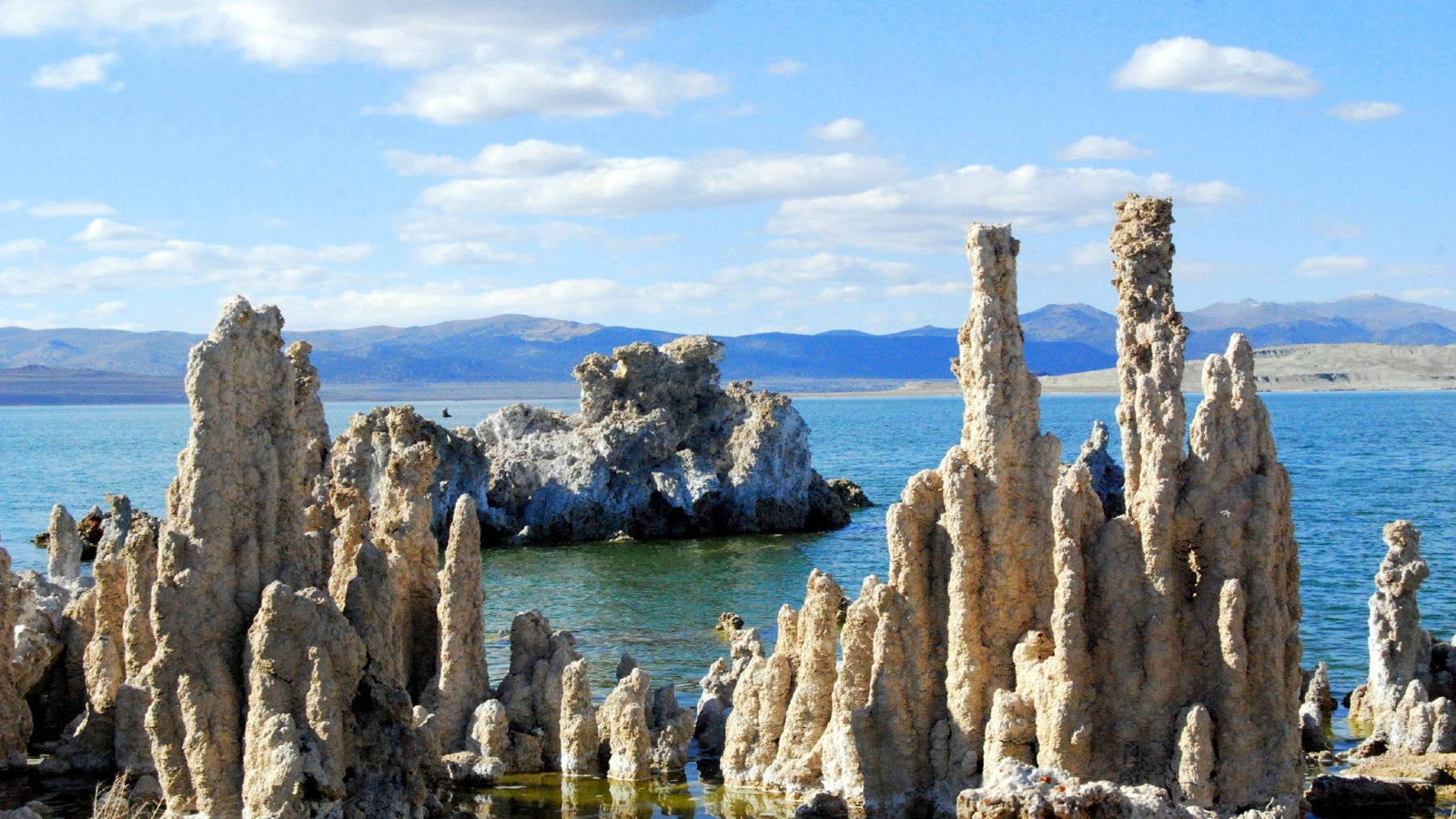Images: Potentially Habitable Super-Earth Planets of Gliese 667C
Artist Impression of Gliese 667C Star System
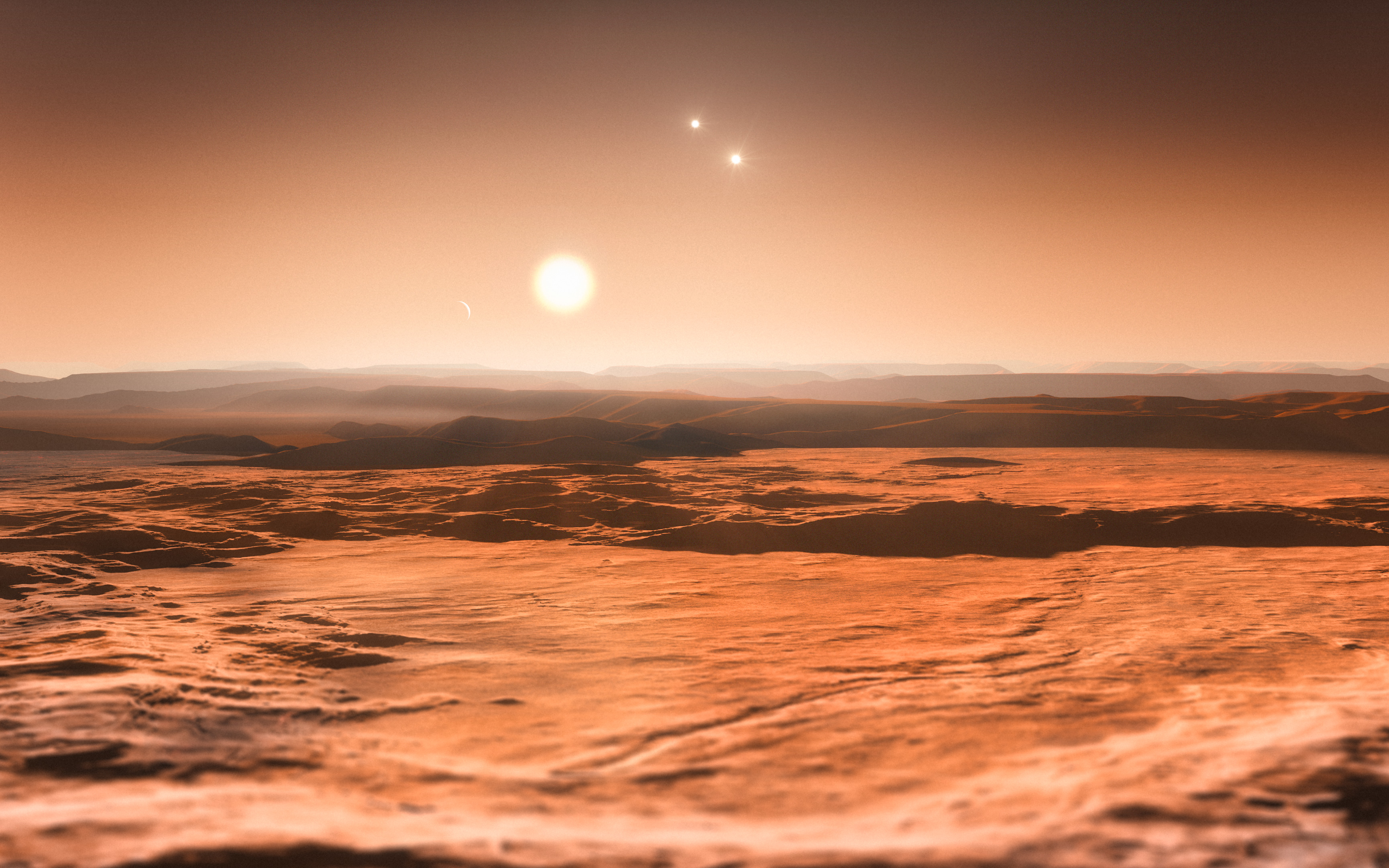
This artist’s impression shows the view from the exoplanet Gliese 667Cd looking towards the planet’s parent star (Gliese 667C). Image released on June 25, 2013. [Read the Full Story]
Gliese 667C: Alien Solar System & Habitable Planets
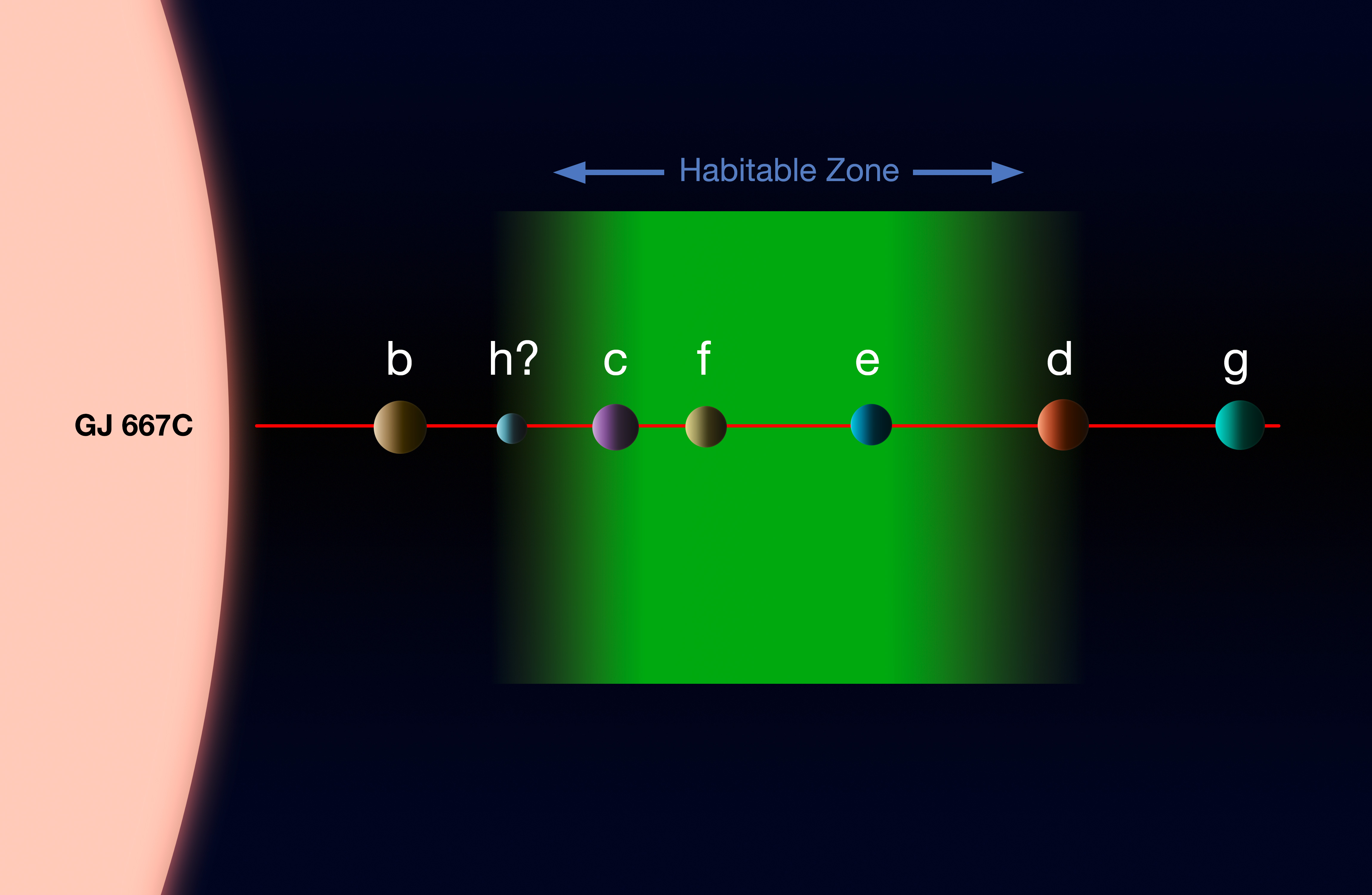
This diagram shows the system of planets around star Gliese 667C. A record-breaking three planets in this system are super-Earths inside the star's habitable zone, where liquid water could exist, making them possible candidates for alien life. This is the first system found with a fully packed habitable zone. Separation of planets not to scale. Image released June 25, 2013. [Read the Full Story]
The Area of Sky Surrounding the Gliese 667 System
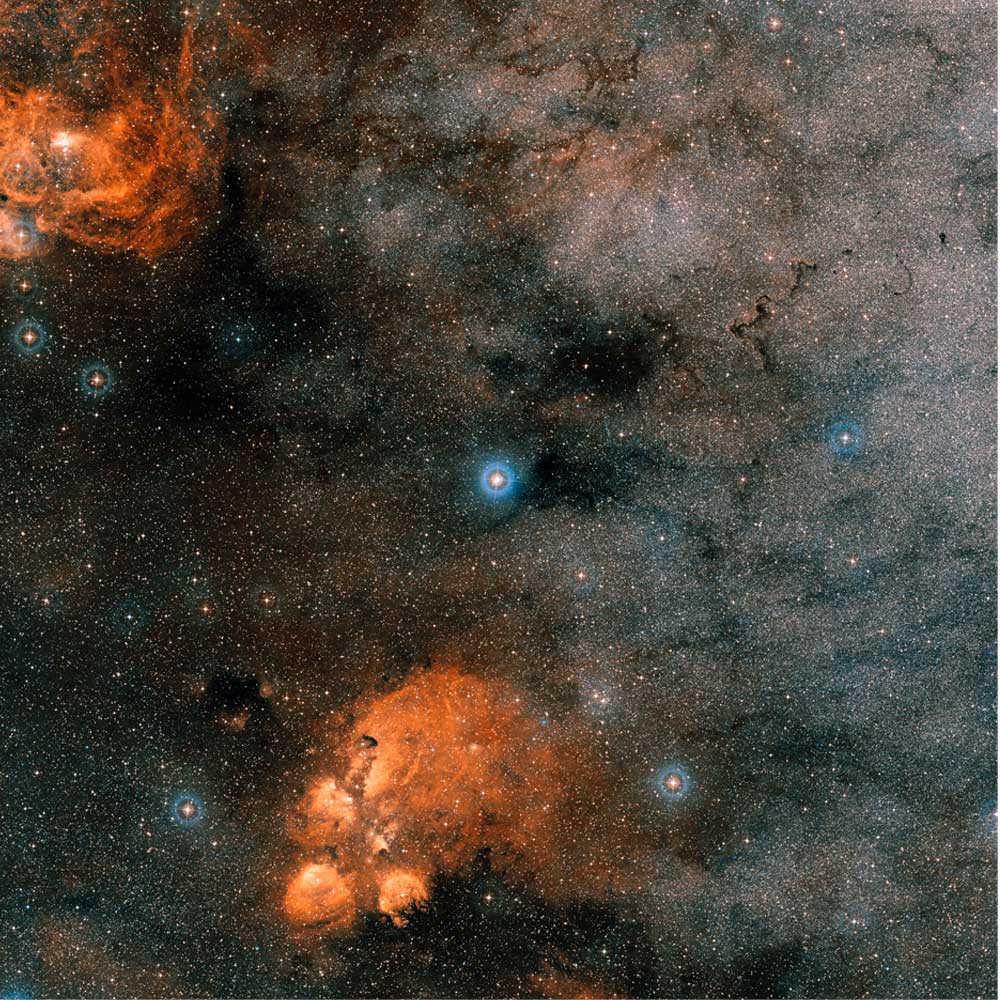
This picture shows the sky around multiple star Gliese 667. The bright star at the centre is Gliese 667 A and B, the two main components of the system, which cannot be separated in this image. [Read the Full Story]
Three Potentially Habitable Planets Around Gliese 667C
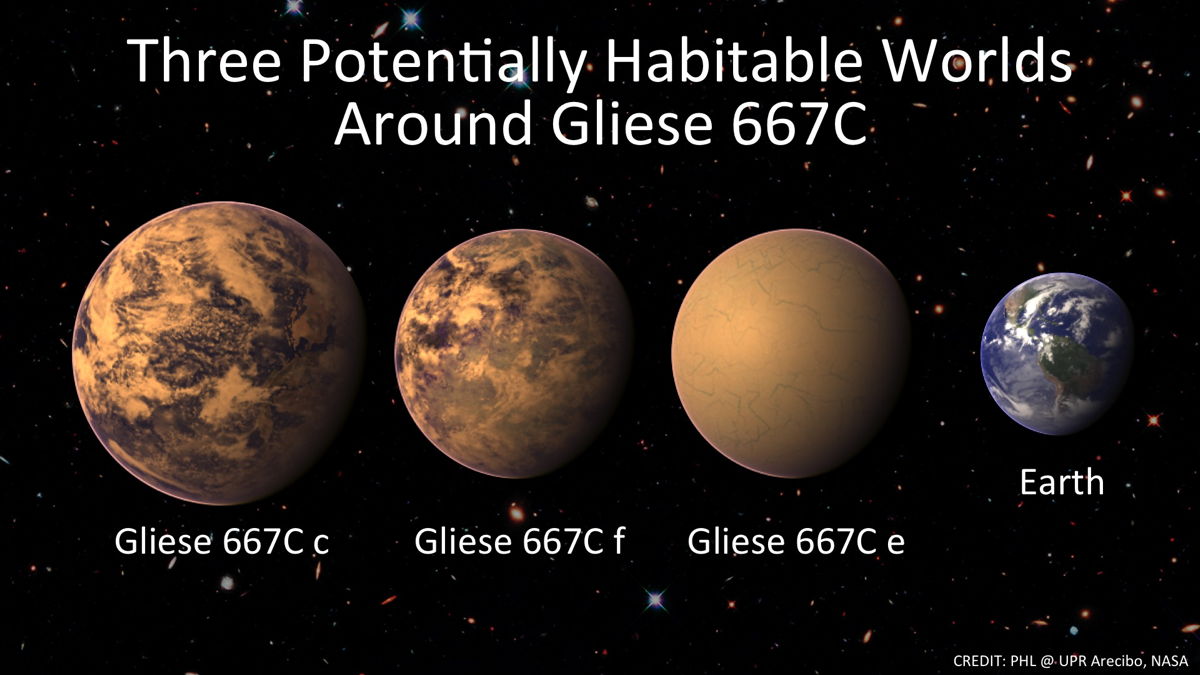
Artistic representations of the three potentially habitable planets around the star Gliese 667C as compared with Earth. The planets are shown assuming a rocky composition with surfaces mostly covered by water clouds. Image released June 25, 2013. [Read the Full Story]
Current Potentially Habitable Exoplanets
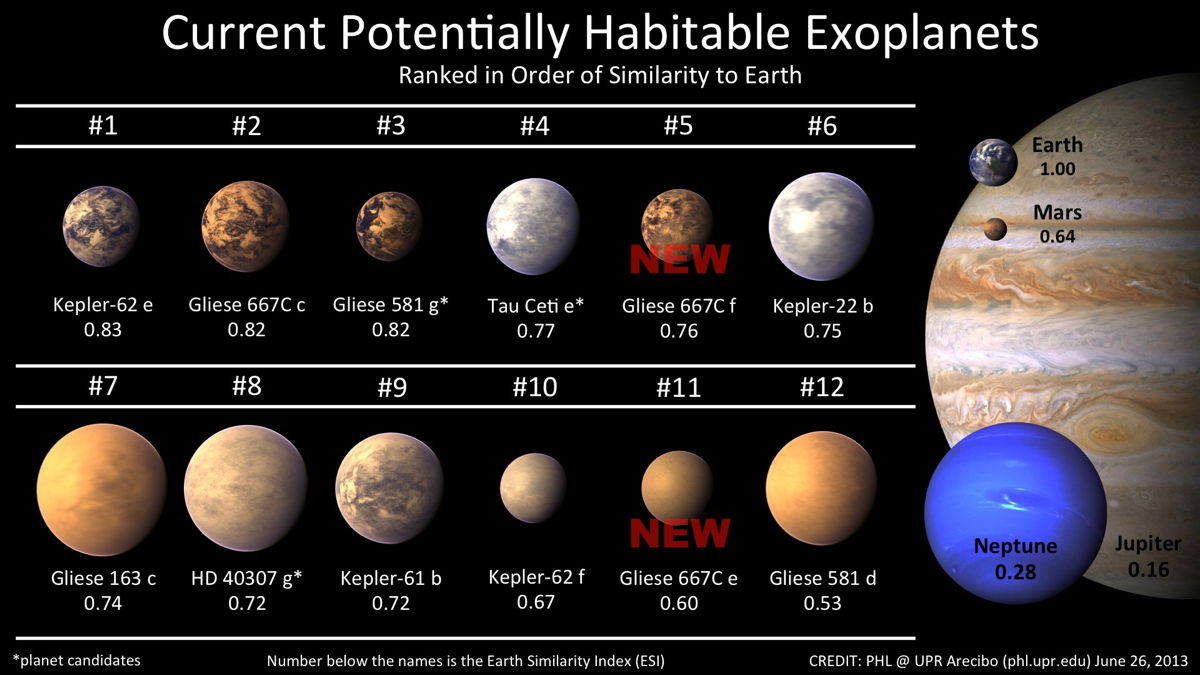
The Habitable Exoplanets Catalog now list a dozen object of interest as potentially habitable worlds with the addition of two new planets, Gliese 667C e and f (Gliese 667C c was known since early 2012). Image released June 25, 2013. [Read the Full Story]
Simulated View of the Star Gliese 667C

Simulated view of the star Gliese 667C from its three orbiting potentially habitable worlds. The Earth image is an unretouched photo of a beach sunset. The size of the star, and the brightness and color of the sky was carefully adjusted in subsequent frames to approximate the same view from each planet. The original photo is from a beach in Puerto Rico. Image released June 25, 2013. [Read the Full Story]
Location of Gliese 667
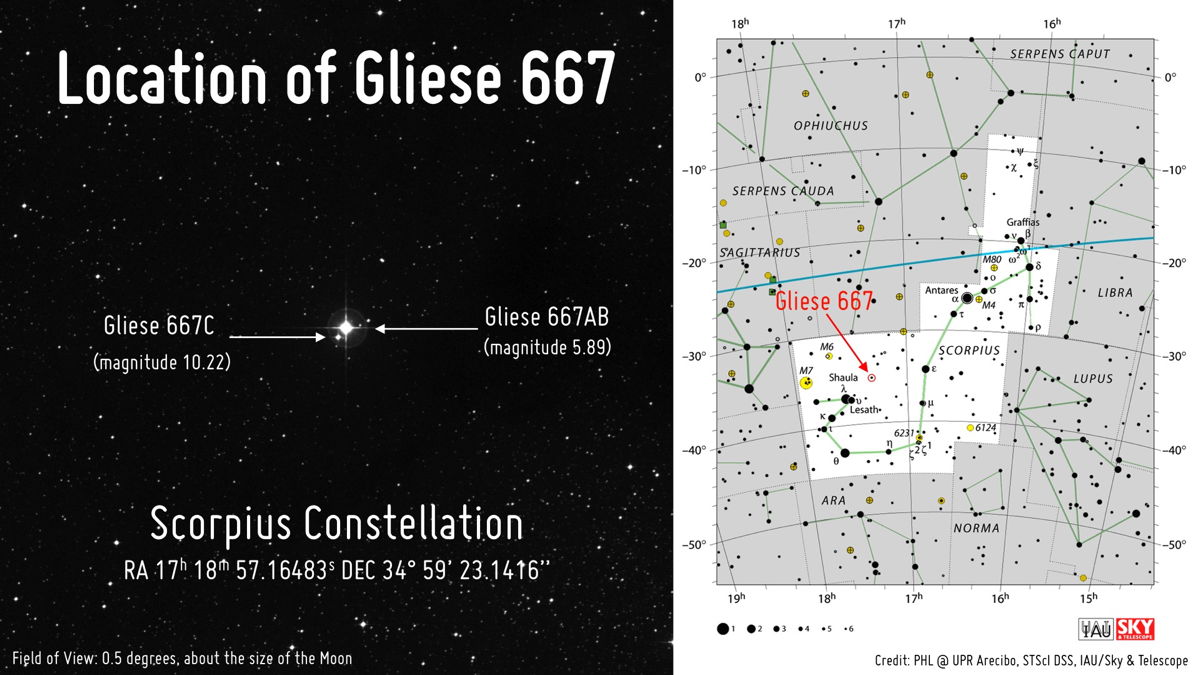
Gliese 667 is a nearby system of three stars that is easy to locate in the Scorpius constellation. The main two central stars Gliese 667AB are barely visible to the naked eye but easy to spot by binoculars or a small telescope. They are so close together that they appear as a single star. Gliese 667C is far enough from the central stars to be seen as separate star. However, it requires a larger telescope to be seem. Image released June 25, 2013. [Read the Full Story]
Breaking space news, the latest updates on rocket launches, skywatching events and more!
Plot of Planets Around Gliese 677C
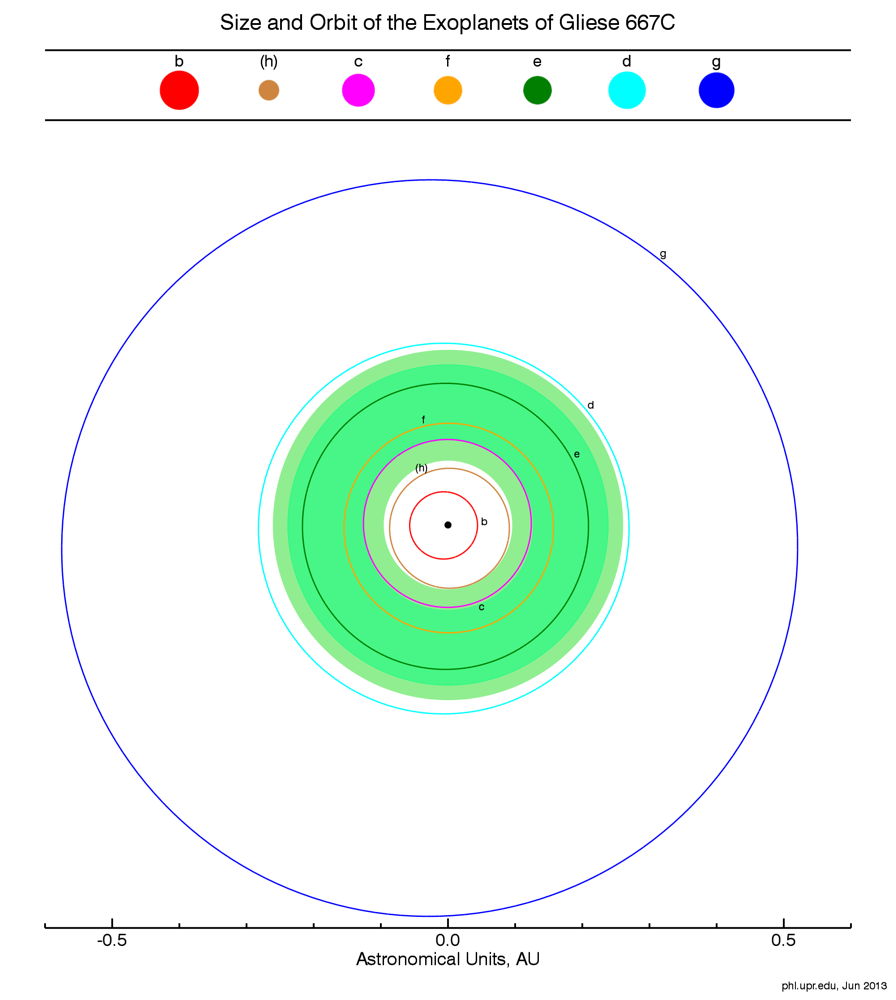
Orbits and approximate relative size of the planets around Gliese 667C (orbits and planets are not to scale with each other). All three potentially habitable planets (c, f, and e) orbit within the 'conservative habitable zone.' image released June 25, 2013. [Read the Full Story]
Join our Space Forums to keep talking space on the latest missions, night sky and more! And if you have a news tip, correction or comment, let us know at: community@space.com.

Tariq is the award-winning Editor-in-Chief of Space.com and joined the team in 2001. He covers human spaceflight, as well as skywatching and entertainment. He became Space.com's Editor-in-Chief in 2019. Before joining Space.com, Tariq was a staff reporter for The Los Angeles Times covering education and city beats in La Habra, Fullerton and Huntington Beach. He's a recipient of the 2022 Harry Kolcum Award for excellence in space reporting and the 2025 Space Pioneer Award from the National Space Society. He is an Eagle Scout and Space Camp alum with journalism degrees from the USC and NYU. You can find Tariq at Space.com and as the co-host to the This Week In Space podcast on the TWiT network. To see his latest project, you can follow Tariq on Twitter @tariqjmalik.
